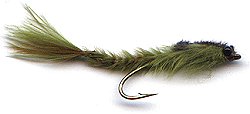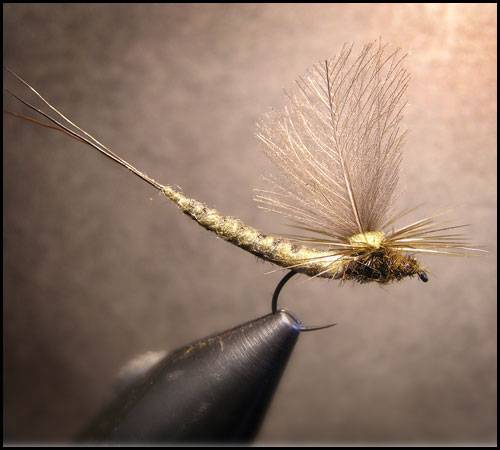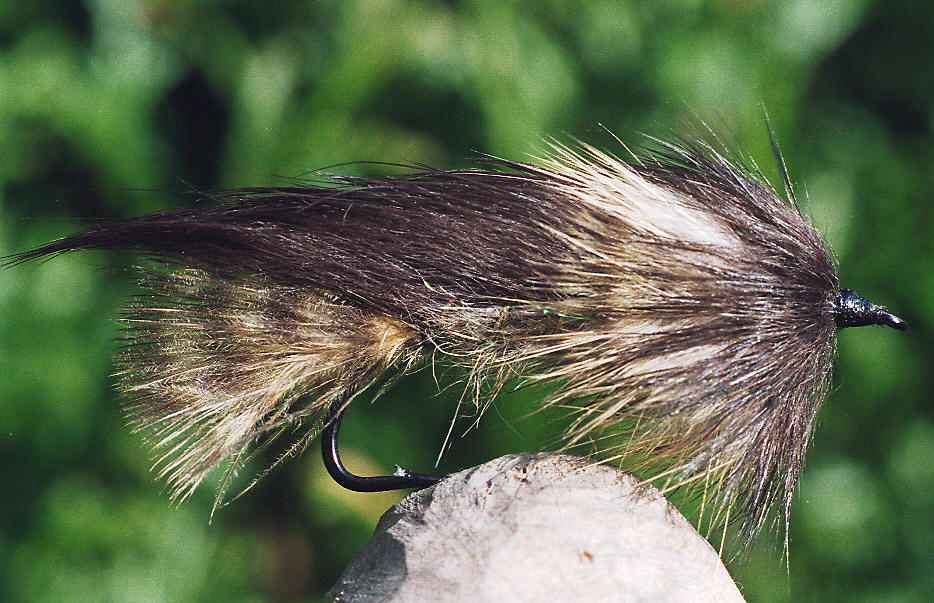
Norwegian Power Dressing
Notice: In coloured water I sometimes include 2 strands of fine spectraflash on each side of the tail and pectoral fins. Variations with a bright and flashy body can be extremely deadly in some circumstances. When I use this pattern on a floating line I also make an underbody of fine lead wire. This streamer is perfect to change colours according to imitate small local fish. For reservoirs and lakes any colour can be used.
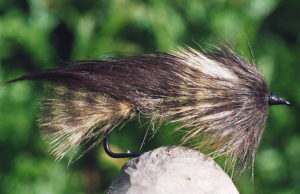
Hook: Daiichi 1710 size 4-2, Daiichi 2271 size 2 (black)
Thread: Uni 8/0 same colours as dubbing
Tail: Chickabou or grizzly marabou tip fibres dyed in natural colours
Body: Squirrel dubbing in many natural colours and mixed with extremely fine spectraflash or similar
Ribbing: Gold, silver or copper wire
Pectoral fins: Chickabou or grizzly marabou tip fibres (same colour as tail)
Dorsal fin: Dark brown mink strip pulled over the body
Collar: One full turn of a cream coloured mink strip (very fine strip)
Front collar: Very fine mink strip (same colour as dorsal) tied in as collard
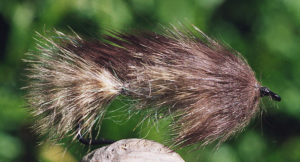
Step 1
Set up tying thread and tie in a tail of Chickabou or grizzly marabou. Use the same technique as for the Frumpy. The tail should now be about twenty millimeters.
Step 2
Take a nice strip of dark brown mink. Watch the natural way the fibres go. The fibres should be pointing backwards. Taper the strip at this end. Tie in the strip at the taper and on top of the hookshank, with the fibres pointing downwards (upside down). Tie in the rib.
Step 3
Make a mixture from squirrel dubbing and extremely fine Spectraflash (for example Glo Bright). Put the dubbing between your spinning loop and tight it up with a dubbing whirl. Wrap your dubbing loop forwards until about 1/3 in front of the hook eye. Secure it with your thread.
Step 4
Pull the mink strip over the top of the body and secure it tight with your ribbing and tying thread. Pick out the dubbing with Velcro so that the Spectraflash gives the action you prefer.
Step 5
Tie in the pectoral fins with the same technique I described for the Frumpy. The length of the fins should be about fifteen millimeters.
Step 6
Take a very fine strip of cream coloured mink fur. Taper the tip and tie it in. Wind it one full turn around the hookshank. Tie it off.
Step 7
Do the same with a strip of dark brown mink fur. Take at least three turns to produce a big and very mobile head.
Notice: The dorsal fin and front collar should be the same colour, but of course you are free to experiment with materials and colours.
Fishing techniques
Depending on the size of the river, I prefer to start with a floating line. If unsuccessful, I usually try a twenty-four foot sink-tip line to present the fly a little deeper. In rivers I mostly cast down and across and retrieve the fly at different speeds. I use the tip of the rod to produce the action. When I use a sinktip I always fish with unweighted versions. For some waters I made an underbody of high floating material to give the fly an extra action. The fly wants to go up but the sink-tip pulls it down while retrieving. This works extremely well in still and saltwater too. With a floating line I do the opposite by using weight in the patterns.








